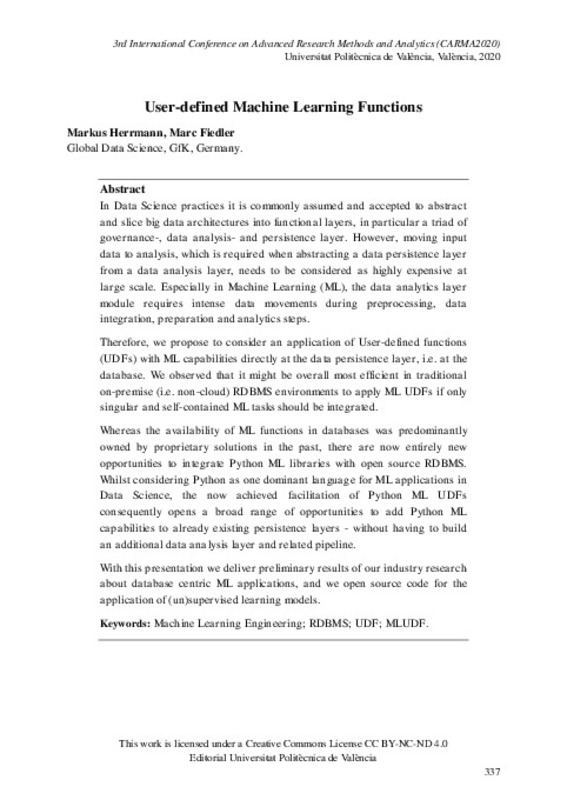JavaScript is disabled for your browser. Some features of this site may not work without it.
Buscar en RiuNet
Listar
Mi cuenta
Estadísticas
Ayuda RiuNet
Admin. UPV
User-defined Machine Learning Functions
Mostrar el registro completo del ítem
Herrmann, M.; Fiedler, M. (2020). User-defined Machine Learning Functions. Editorial Universitat Politècnica de València. http://hdl.handle.net/10251/149581
Por favor, use este identificador para citar o enlazar este ítem: http://hdl.handle.net/10251/149581
Ficheros en el ítem
Metadatos del ítem
| Título: | User-defined Machine Learning Functions | |
| Autor: | Herrmann, Markus Fiedler, Marc | |
| Fecha difusión: |
|
|
| Resumen: |
[EN] In Data Science practices it is commonly assumed and accepted to abstract
and slice big data architectures into functional layers, in particular a triad of
governance-, data analysis- and persistence layer. However, ...[+]
|
|
| Palabras clave: |
|
|
| Derechos de uso: | Reconocimiento - No comercial - Sin obra derivada (by-nc-nd) | |
| ISBN: |
|
|
| Editorial: |
|
|
| Versión del editor: | http://ocs.editorial.upv.es/index.php/CARMA/CARMA2020/paper/view/11564 | |
| Título del congreso: |
|
|
| Lugar del congreso: |
|
|
| Fecha congreso: |
|
|
| Tipo: |
|






